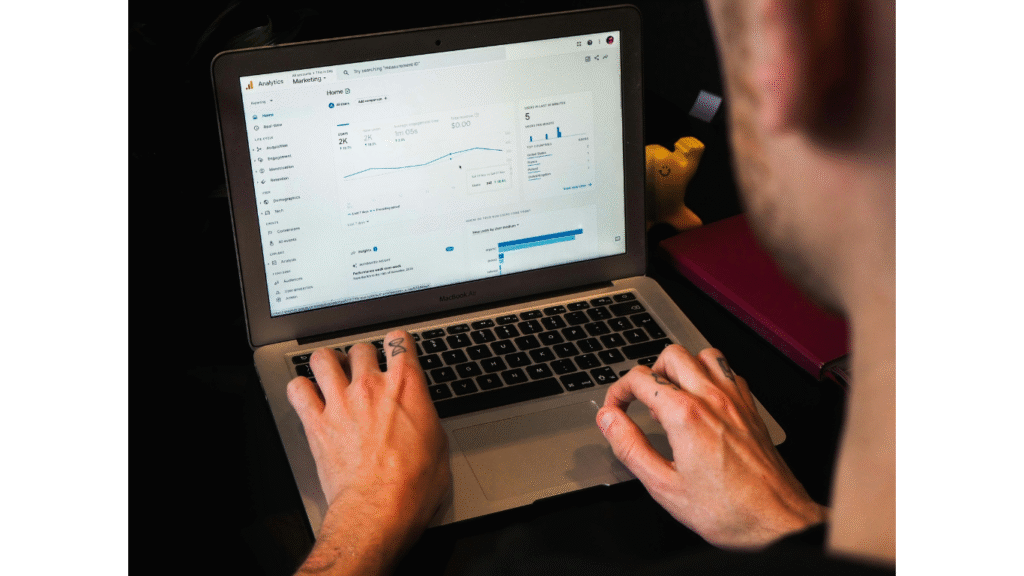Organizations strive to meet the increasing expectations of consumers, and the importance of user interface (UI) and user experience (UX) design cannot be overstated. These disciplines focus on improving how users interact with websites, apps, and other digital products so that every touchpoint along the customer journey is seamless and engaging.
Companies that prioritize exceptional UI and UX design increase user satisfaction and drive higher conversion rates. Investing in professional UI and UX experts is necessary for businesses looking to improve their customer journeys.
The Fundamentals of UI and UX
UI and UX are terms that are used interchangeably, but they represent distinct aspects of the design process. User interface refers to the specific visual elements that users interact with, including buttons, icons, and layout. It’s all about how the product looks and how these elements are arranged to boost navigation.
User experience encompasses the entire journey a user has with a product, from the initial interaction to the outcome. Companies that fail to grasp this distinction may overlook critical elements that could improve their products.
The Role of Research in UI and UX Design
A better knowledge of the target audience will help businesses tailor experiences that resonate with users. This process begins with gathering data through surveys, interviews, and user testing to identify user preferences, pain points, and behaviors. Designers can create more informed design choices that cater to specific demographics and user segments.
Continuous research is highly required. User preferences can change, so organizations must stay attuned to new trends. Explore your options and check the top UX design agencies in this article to find the right fit for your needs. An agency will enforce better customer retention and increased satisfaction.
The Impact of UI and UX on Conversion Rates
When users encounter a visually appealing interface combined with smooth navigation, they can make purchases or sign up for services. Data shows that even a one-second delay in page loading can increase bounce rates. Optimizing both UI and UX can boost speed, functionality, and aesthetics.
Clearer calls to action within a well-designed interface garner attention and quick user engagement, driving higher sales and conversions. Investing in the quality of UI and UX design can deliver a substantial return on investment.
Creating User-Centric Designs
Designers should place themselves in the shoes of the users, considering their needs, goals, and challenges. This empathetic approach will give birth to intuitive, appealing, and functional designs.
User personas are detailed profiles that represent key characteristics of target customers and serve as guidelines throughout the design process. Usability testing validates design decisions. Feedback from real users can expose areas that need refinement and can confirm which design elements are the most effective. With a user-centric approach, businesses can produce designs that attract users and even convert them into loyal customers.

Mobile Responsiveness and Its Importance
A responsive design allows websites and applications to adapt to different screen sizes and orientations. Users will have an optimal experience regardless of how they access a service. Failure to implement a responsive design can cause frustration and drive potential customers away.
Mobile users tend to be more sensitive to poor usability than desktop users, highlighting the necessity of prioritizing mobile responsiveness. Designers should check that navigation, readability, and functionality are prioritized across devices.
Trends Shaping the Future of UI and UX Design
New trends in UI and UX design are shaping how professionals approach their work. Personalization is now at the forefront. Users expect experiences that are tailored to their specific preferences and behaviors so that designers can leverage data for customization. The integration of artificial intelligence (AI) and machine learning can analyze user patterns, delivering content and experiences that resonate with individual users.
The minimalist design approach is being favored, as it promotes clarity and focus within digital spaces and improves user engagement. With users favoring brands that exhibit commitment to environmental responsibility in their design processes, sustainability has gotten more and more relevant. Businesses must stay updated and adapt their strategies accordingly. Embracing these trends can seriously improve user experiences and lead to improved customer loyalty and satisfaction.
UI and UX design are the elements that are transforming customer journeys for everyone. The distinction between these fields is critical, as is the need for thorough research and user-centric approaches.
By prioritizing collaboration and adapting to new trends, businesses can create digital experiences that encourage user satisfaction and loyalty. Investing in top UI and UX professionals guarantees that organizations remain competitive and drive loyal customers in.
Article received via email






























